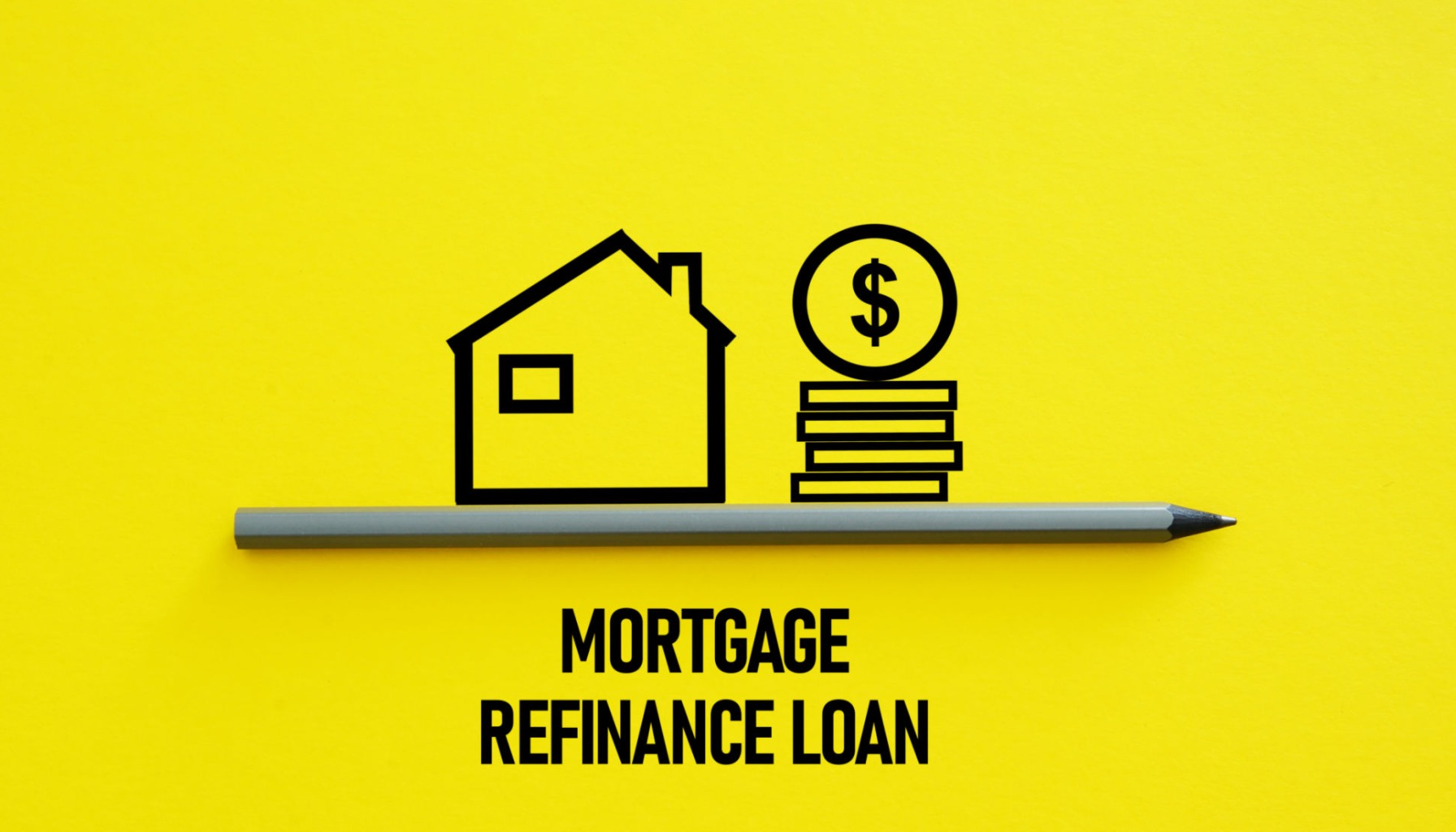Are you thinking about refinancing your mortgage? Today's news might make you think twice. According to Zillow, the national average 30-year fixed refinance rate has jumped a significant 20 basis points, rising from 6.86% to 7.06% as of Friday, October 3, 2025 . This increase, along with jumps in 15-year fixed and 5-year ARM refinance rates, definitely warrants a closer look before you make any decisions.
Mortgage Rates Today: 30-Year Refinance Rate Jumps by 20 Basis Points
What's Behind This Sudden Increase?
Several factors influence mortgage rates. Economic data, Federal Reserve (the Fed) policy, and investor sentiment all play a role. To truly understand what’s happening, we need to look at the bigger picture. Remember that rates are affected by so many things and can never be predicted!
Breakdown of the Current Refinance Rates (October 3, 2025):
- 30-Year Fixed Refinance Rate: 7.06% (Up 20 basis points)
- 15-Year Fixed Refinance Rate: 5.88% (Up 17 basis points)
- 5-Year ARM Refinance Rate: 7.48% (Up 28 basis points)
Should You Refinance Now?
Whether or not you should refinance depends entirely on your individual situation. Here are some things to consider:
- Current Interest Rate: What's your current mortgage rate? If it's significantly higher than the current refinance rates, refinancing might still make sense, even with the recent increase.
- Long-Term Financial Goals: How long do you plan to stay in your home? If you're planning to move in a year or two, the costs associated with refinancing might outweigh the benefits.
- Refinancing Costs: Refinancing isn't free. You'll need to factor in appraisal fees, origination fees, and other closing costs. Make sure the potential savings outweigh these expenses.
The Fed's Recent Rate Cut and Its Impact
On September 17, 2025, the Federal Reserve took an important step by cutting its benchmark interest rate by a quarter percentage point, placing the target range between 4.0% and 4.25%. This was the first cut after a pause. But how does that impact your mortgage?
Understanding the Link: Fed Rate Cuts and Mortgage Rates
The Fed's rate cuts don't directly translate into lower mortgage rates. The connection is a bit more indirect. The Fed influences mortgage rates through the 10-year U.S. Treasury yield. This yield serves as a critical benchmark for 30-year fixed-rate mortgages.
Here's how it works:
- Direct Benchmark: Lenders use the 10-year yield as a starting point for pricing 30-year mortgages because the average homeowner holds a loan for roughly that long.
- Investor Competition: Mortgage-backed securities (basically groups of mortgages bundled together) have to offer competitive returns to attract investors, especially when compared to the safety of Treasury bonds.
- The “Spread”: Mortgage rates are typically higher than the 10-year yield to compensate lenders for risk. Historically, this “spread” has been 1 to 2 percentage points. Recently, it's been wider, acting as a drag on how much mortgage rates fall, even when Treasury yields go down.
What the Rate Cut Means for Mortgage Rates (and You)
Even though the 10-year Treasury yield has dropped after the Fed's cut, the stubbornly wide spread has meant that the decrease in mortgage rates hasn't been as big as some might have hoped. This somewhat explains the recent jump that has been mentioned.
This means:
- While the Fed is in easing mode, the spread is still keeping rates higher than they might otherwise be.
- We could see a gradual decline in mortgage rates if the spread begins to narrow. I think there is still a possibility of dipping below 6% in early 2026.
The Caveats: Keep an Eye on Inflation
Here's the thing: inflation is still “sticky” (meaning it's not going down as quickly as the Fed would like). The core PCE price index (the Fed's preferred measurement) was still at 2.9% year-over-year in August 2025, above the bank's target of 2%.
What could happen if inflation rises? Well the Fed might have to change course, which would more than likely push Treasury yields and mortgage rates back up.
Recommended Read:
30-Year Fixed Refinance Rate Trends – October 2, 2025
The Housing Market: What's the Outlook?
So, what all of this means for the housing market?
- For Buyers: Even a small decrease in mortgage rates is helpful. Despite these increases, purchase power is a little better than it was 6 months ago. Be aware of the market and rates, to get the best rates possible.
- For Sellers & Inventory: If rates fall enough, some homeowners who were “locked in” to low rates might decide to sell. Then, you could see increased inventory. Although, higher prices are likely to continue if new buyer demand goes above new listings.
Breaking it Down for Different Groups:
To better illustrate the potential impact, here's a table summarizing how these changes might affect different groups:
| Group | Impact | Actionable Advice |
|---|---|---|
| Current Buyers | Modestly improved affordability; competition remains high in areas with limited housing supply. | Focus on securing the best possible rate; be aware of the spread between Treasury yields and mortgage rates. |
| Refinancers | Improved opportunity window for those with rates above 6.5%. | Actively explore refinancing options; compare offers from multiple lenders. |
| Market Watchers | Journey toward lower rates will be cautious; wide spread suggests rates will remain elevated relative to Treasury yields for the foreseeable future. | Monitor inflation reports, labor market data, and the spread between Treasury yields and mortgage rates. |
What to Watch Moving Forward:
To keep an eye on rates, you should pay attention to a few things:
- Inflation Reports: Keep a close eye on the PCE and CPI numbers.
- Labor Market Data: This is an important indicator of the overall economy. Softening could make the Fed consider even more rate cuts.
- The Spread: As I said before, a narrower spread will be necessary for larger relief to borrowers.
My Final Thoughts
As someone who's been following the markets for years, I will say that the combination of the Fed's actions and the current market conditions creates both opportunities and challenges. Understanding the factors influencing mortgage rates is important for navigating the housing market. The recent jump of 20 basis points in the 30-year refinance rate should serve as a reminder that things may not be going in a straight direction all the time. I suggest you be aware and watchful, and work with a trusted, qualified financial advisor to determine what is best for your individual situation.
Maximize Your Mortgage Decisions
Thinking about whether to refinance now? Timing is critical, and having the right strategy can save you thousands over the life of your loan.
Norada's team can guide you through current market dynamics and help you position your investments wisely—whether you're looking to reduce rates, pull out equity, or expand your portfolio.
HOT NEW LISTINGS JUST ADDED!
Talk to a Norada investment counselor today (No Obligation):
(800) 611-3060
Recommended Read:
- When You Refinance a Mortgage Do the 30 Years Start Over?
- Should You Refinance as Mortgage Rates Reach Lowest Level in Over a Year?
- NAR Predicts 6% Mortgage Rates in 2025 Will Boost Housing Market
- Mortgage Rates Predictions for 2025: Expert Forecast
- Half of Recent Home Buyers Got Mortgage Rates Below 5%
- Mortgage Rates Need to Drop by 2% Before Buying Spree Begins
- Will Mortgage Rates Ever Be 3% Again: Future Outlook
- Mortgage Rates Predictions for Next 2 Years
- Mortgage Rate Predictions for Next 5 Years
- Mortgage Rate Predictions for 2025: Expert Forecast



